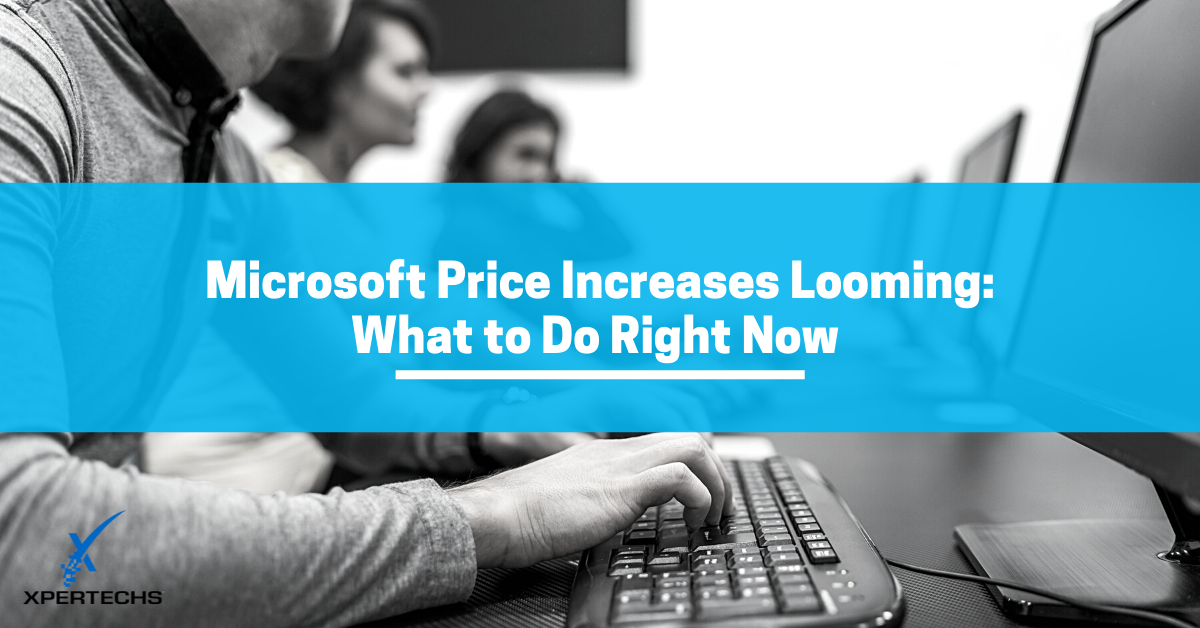Microsoft Price Increases Looming: What to Do Right Now

Microsoft has started phasing in price increases that they announced last August 2021. They’re calling this their “New Commerce Experience” (NCE) and the bottom line is that licenses purchased through Cloud Solution Provider programs will be more expensive and less flexible.
Microsoft tried to soften the blow as they introduce their new pricing model by explaining that they haven’t had a substantial price update in the 10 years since Office 365 was launched.
Some wonder if the new model will make Microsoft’s competitor offerings more attractive, or if Microsoft will respond to the pushback that is rippling through the business world.
While either of these scenarios may eventually unfold, business leaders can’t wait to respond. You need to act now to figure out what your immediate course of action should be to minimize the price hit and ensure continuity of the business apps that you count on to operate your organization every day.
There are some discounts available during the NCE phase-in that we are already exploring with our clients. We’re also interpreting the nuances of Microsoft’s new model as they relate to long-term planning in order to budget for future growth.
Making decisions about a course of action starts with understanding the situation.
Three Parts to the New Commerce Experience
Microsoft’s NCE program has three main parts that will change the way that Microsoft 365 subscriptions have traditionally been offered.
1. Base Subscription Prices Go Up
New base pricing takes effect March 1st, 2022.
- Microsoft 365 Business Basic from $5 to $6
- Microsoft 365 Premium from $20 to $22
- Office 365 E1 from $8 to $10
- Office 365 E3 from $20 to $23
- Office 365 E5 from $35 to $38
- Microsoft 365 E3 from $32 to $36
2. Long-Term Contracts and Licenses Locked In
It’s going to cost you about 20% more (compared with a one-year contract) if you want the flexibility of going month to month. Contract terms of one year and three years will be standard.
Along with the longer time commitment, the NCE will lock you into a specified number of licenses. You’ll have the option to increase your licenses, but you won’t be able to reduce them until it’s time to renew.
3. New Licensing Agreement to Sign
Your Microsoft subscriptions under NCE are essentially a new contract between you, Microsoft and the reseller, and you’ll have to accept the terms of the new agreement. Under the new model, Microsoft is asking for a bigger financial commitment, and they’re backing it up by making sure that everyone signs on the dotted line.
What To Do Right Now
1. Audit your current Microsoft licenses to make sure that you know exactly how many you need to migrate to the NCE program.
2. Talk to your Managed IT Service provider about NCE and find out if you can take advantage of discounts that are being offered on annual subscriptions before March 1, 2022.
3. Talk with your vCIO about the long-term implications of Microsoft licensing for your particular business. They’ll help you to decide if one or three-year terms make more sense, or if you need to have a handful of month-to-month licenses to handle short-term changes in your business.
XPERTECHS is Microsoft Gold Partner
As a Microsoft Gold Partner and holder of 11 other accreditations, we’re helping our clients navigate the New Commerce Experience so that they can each find their best balance between costs and flexibility. If you don’t have that kind of guidance from your IT support or managed service provider, it’s probably time to look at your options.
Learn how we support organizations that rely on Microsoft 365 applications, then contact us for a free IT consultation.
